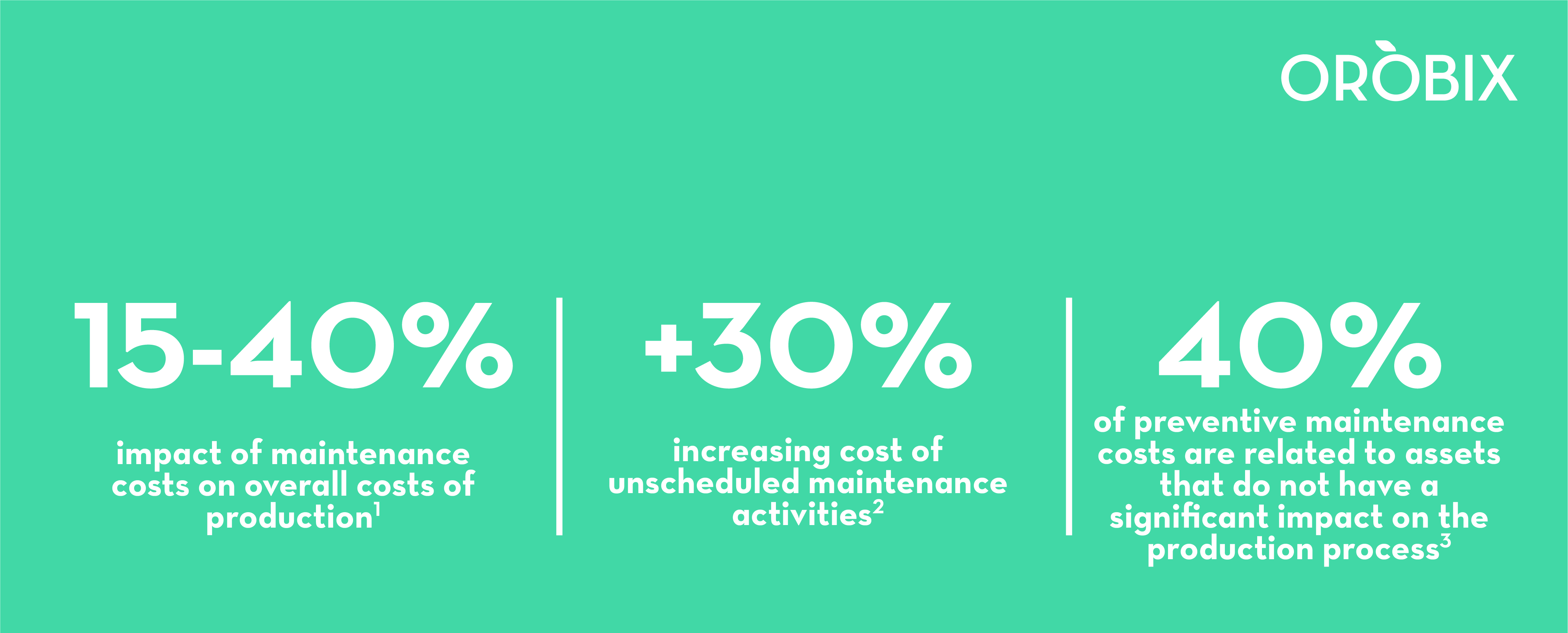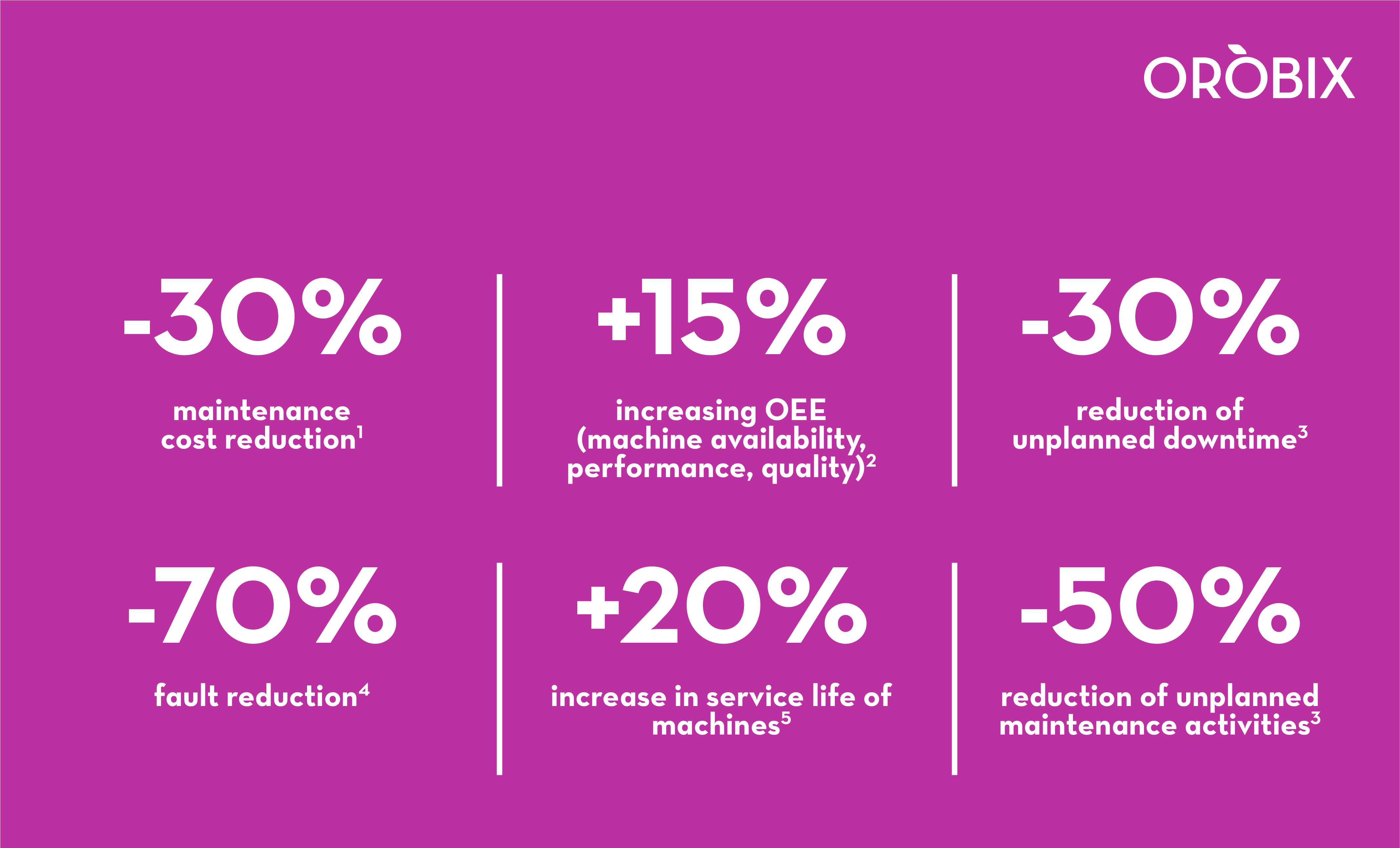Can you anticipate failures and downtime?
Do we need to have an anomaly in order to predict a machine's downtime?
The market offers ready-to-use AI solutions for predictive maintenance?
THE Ò-BLOG
Preventing downtime: let’s listen to your data

09 June 2021
Reading Time: 4 minutes
How artificial intelligence can help you make strategic decisions based on data from your manufacturing processes.
On the way to the connected, predictive and smart factory
Let’s start with some real data on Industry 4.0 and process drifts:
- maintenance activities are responsible for 15% up to 40% of manufacturing costs1 and unscheduled tasks are the primary cause of these costs;
- due to the costs of production downtime, loss of business opportunities, and loss of customer confidence, an unexpected maintenance intervention can cost 30% more than the same task planned in advance2;
- 40% of preventive maintenance costs are related to assets that do not have a significant impact on the production process. In addition, 30% of maintenance activities are carried out too frequently compared to real needs3.

These few data are enough to understand the impact of more accurate maintenance planning, that can be performed according to the real machine’s condition and monitoring in real-time the assets through industrial IoT systems. In this scenario, we talk about ‘just-in-time’ maintenance instead of the traditional ‘run-to-failure’ approach, which requires intervention only after a failure. The ideal goal to achieve is having “zero downtime”, i.e. keeping the production plant working all the time, without unnecessary downtime due to malfunctions.
Industrial IoT and artificial intelligence enable analysis and “precision” asset management.Thus, they can really make an important contribution to optimizing the production and maintenance process, creating a connected, predictive and intelligent factory.
Artificial intelligence solutions for precision predictive maintenance
A first necessary clarification: an anomaly is not a fault, but it can indicate an ongoing drift that can lead to machine downtime and the production of non-compliant parts.
From this assumption, at Oròbix we developed detectiv.ai.
Detectiv.ai is an anomaly detection system (or outlier detection) that uses artificial intelligence algorithms to automatically identify unusual situations within the time series of data collected by on-board sensors.
Data from Industrial IoT systems allows real-time identification of any changes in asset conditions and performance, even if these are not directly detectable by the operator because not directly related to a single sensor, but due to the combination of several parameters instead.
A simple alert allows the operator to act in advance in order to fine tune the process, avoid failures and downtime.
The main feature of detectiv.ai is the ability to predict plant drifts based only on ‘normal’ (i.e. not anomalous) operating data. Detectiv.ai models can be trained without waiting for any anomaly to occur.
This reduces the time spent on data collection and allow the system to immediately generate value for the business.
Moreover, in order to make detectiv.ai able to adapt to each production process, specific models can be implemented for each product or for each process. Whenever necessary, detectiv.ai automatically uses the model created specifically to meet the process requirement, generating a new one if not available.
This allows the system to fit each specific use case and minimizes the configuration effort needed.
It is possible to have full visibility of the system’s performance over time through dedicated dashboards. In addition, detectiv.ai can be re-trained on newly available data when necessary.
detectiv.ai is one of our AI Solutions - ready-to-use artificial intelligence systems - that bring the potential of AI into industries with easy-to-use, reliable, cost-effective tools and facilitate high return on investment over time.
Tangible results

This approach carries multiple and valuable benefits:
- failures and unexpected downtimes are avoided, together with the associated costs (maintenance and non-production);
- process drifts are monitored in real time and early corrective action can be provided in case of non-conforming production or by going back to the moment the anomaly started and segregating the compromised stock;
- machine operating time is extended, increasing productivity and efficiency;
- it’s possible to save on components by using them as much as possible and only replacing them at the end of their service life;
- reduce warehouse occupancy with spare parts only ordered when component degradation exceeds the limit.
1“An industry 4.0-enabled low cost predictive maintenance approach for smes,” in 2018 IEEE International Conference on Engineering, Technology and Innovation (ICE/ITMC), 2018
2“An introduction to predictive maintenance”, R. K. Mobley, Elsevier, 2002
3,4http://www.plant-maintenance.com/articles/PMCostReduction.pdf
5,6,7“Asset Monitoring & predictive maintenance”, Deloitte, 2017
8,10G.P. Sullivan, R. Pugh, A.P. Melendez and W.D. Hunt, “Operations & Maintenance Best Practices: A Guide to Achieving Operational Efficiency, Release 3.0,” Pacific Northwest National Laboratory, U.S. Department of Energy, August 2010
9Predictive Maintenance 4.0: Beyond the hype, 2018, PwC
Would you like to learn more about our ready-to-use AI solutions? Contact us and schedule a demo of detectiv.ai.
